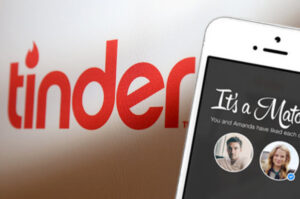How to Build an App Like Tinder: Features, Cost & Tech Stack

Dating apps have developed into a go-to option for those looking for deep connections in today’s fast-paced digital environment. Among them, Tinder is unique because it leads to location-based matching and has an easy swipe-based interface. If you are thinking about creating an app like Tinder, then you should know about both strategic and technical needs.
Establishing a successful dating website requires giving a flawless user experience, guaranteeing backend dependability, and providing something distinctive to draw in users, not only by copying elements. The development process calls for meticulous planning, whether your aim is to produce a wholly original idea or a Tinder clone with enhanced capabilities.
From determining your target audience to creating a user-friendly interface and using scalable, secure technologies, each action counts greatly. Whether your business is a startup, an entrepreneur, or a developer, this guide will coach you through the key actions to realize your dating app goal and compete in a market under expansion.
Table of Contents
What is Tinder?
Tinder is a mobile dating app that was released in 2012 and uses a simple swipe method to help users find matches nearby. If users like someone or leave to pass, they rapidly swipe right instead of looking over long lists or completing extensive forms. Two users can start talking inside the app when they both swipe right, since it generates a match.
Tinder’s simplicity and geographical emphasis on linking people close to one another help to explain its appeal. It made mobile dating available for millions of people and pushed the idea of “swipes” into common discussion.
Along with premium services like “Super Likes,” “Boosts,” and subscription plans giving customers extra benefits like unlimited swipes or the chance to view who liked them, Tinder also provides.
Key Features of a Tinder App
Creating an app like Tinder involves concentrating on easily navigable elements that make dating fun. These are the main elements you should incorporate:
1. User Registration and Profile Setup
Let consumers register with Facebook and Google’s social logins or email addresses. Users include their pictures, name, age, and a brief bio upon sign-up. Customizing choices for profiles lets people present themselves.
2. Swipe Interface
Tinder’s swipe feature, which enables users to swipe left to pass or right to like a profile, is its trademark. The browsing experience should be fun, as the UI has to be fast and flawless.
3. Geolocation Matching
Your software should show the surrounding users using GPS data. Distance filters enable users to select the extent of the search for matches.
4. Matching Algorithm
When two users swipe right on each other’s profiles, the app creates a match and unlocks messaging between them.
5. Chat System
Users who match can chat inside the app. The interaction is enhanced by real-time messaging, including read receipts and multimedia sharing of images and emojis.
6. Push Notifications
Tell users right away when they receive fresh matches or messages to sustain their interest.
7. Profile Verification
By verifying users’ identities and thereby lowering false profiles and fraud, this function builds confidence.
8. Blocking and Reporting
Blocking or reporting dubious profiles lets users contribute to keeping a safe community.
9. Premium Features
Provide in-app purchases or membership plans for benefits, including unlimited swipes, profile boosts, or who liked you visibility enhancement.
Technology Stack for Building a Tinder App
Selecting the correct technology stack guarantees that your app scales with your user base and runs properly. The technologies you might employ are broken out here:
Frontend Development
- React Native or Flutter: From a single codebase, both systems let you build apps for Android and iOS, therefore saving Mobile App Development Companies‘ time and expenses.
- For web components, if you want a web version, use React.js or Vue.js.
Backend Development
- Node.js with Express.js: Fast, efficient, and widely supported for real-time apps.
- Alternatively, use Django (Python) or Ruby on Rails.
Database
- MongoDB (NoSQL) works well for flexible data models like user profiles and messages.
- PostgreSQL (SQL) offers strong relational data support.
- Redis can handle caching and real-time features.
Real-Time Messaging
- Socket.io with Node.js provides instant chat updates.
- Firebase Realtime Database is another option for easy real-time communication.
Geolocation
- Use Google Maps API or Mapbox for accurate location tracking and distance calculations.
Cloud Infrastructure
- Host your backend and storage on AWS, Google Cloud, or Microsoft Azure.
- Use Cloudinary or AWS S3 to store and serve user photos.
Push Notifications
- Firebase Cloud Messaging (FCM) or OneSignal enables reliable push notifications.
Analytics
- Tools like Google Analytics or Mixpanel track user behavior to improve your app.
Development Cost for a Tinder App
The cost of creating apps such as Tinder depends on many factors, including the app complexity, the growth team, and the location. Here is a common idea of what you can expect:
Basic Tinder-Like App
- Core features: user profiles, swipe, match, chat, and notifications.
- Simple design, minimal premium features.
- Development time: around 3-4 months.
- Estimated cost: $25,000 to $50,000.
Advanced Tinder-Like App
- Includes premium subscriptions, video chat, advanced filters, and profile verification.
- Custom animations and UI/UX polish.
- Scalable backend with better security.
- Development time: 5-7 months or more.
- Estimated cost: $50,000 to $120,000.
Post-Launch Costs
- Maintenance, server costs, updates, and marketing.
- Plan for ongoing expenses after launch.
Step-by-Step to Build an App Like Tinder
Dating apps like Tinder have changed meet-up rules and social contacts. You have to first understand the development process from idea to release if you wish to design an app like Tinder. This is a thorough handbook to get you started.
Step 1. Research the Market
Starting with extensive market research, examine current dating apps to learn their features, strengths, and user base. Name your intended audience and decide what special value your app may provide. Ask yourself: Will it provide a fresh kind of matching technique or fit a certain niche?
Step 2. Define Key Features
Tinder is known for its intuitive design and simple swiping mechanism. Core features you should include are:
- User Registration (via email, phone, or social accounts)
- Profile Creation and Editing
- Geolocation-Based Matching
- Swipe Functionality (Like, Dislike)
- Chat/Messaging System
- Push Notifications
- Privacy and Security Settings
Optional advanced features might include AI matchmaking, video profiles, or in-app purchases for premium features.
Step 3. Design the User Interface (UI/UX)
Create a navigable user interface. Plot the user trip from registration to chatting using prototypes and wireframes. Emphasize responsive, neat, and interesting design fit for both iOS and Android smartphones.
Step 4. Choose Your Tech Stack
Choose technologies depending on the needs of the app and the knowledge of your team. Typical options consist of:
- Frontend: React Native or Flutter for cross-platform development
- Backend: Node.js, Ruby on Rails, or Python (Django)
- Database: PostgreSQL, MongoDB, or Firebase
- APIs: Google Maps API, social login APIs, or third-party chat SDKs
Step 5. Develop the MVP (Minimum Viable Product)
Start with an MVP that just consists of fundamental abilities. This lets you minimally invest to test your software on the market. Guarantee frontend responsiveness and backend stability is Put in place robust user privacy data encryption.
Step 6. Test Rigorously
Both manually and automatically test. Prioritize security, performance, and usability. Get comments from beta testers and address UI or bug problems before release.
Step 7. Launch and Promote
Launch the app on Google Play and the App Store after it is steady. Draw users in via social media, influencers, and focused marketing. Track user activity using analytics tools, then get ready to expand given your user base increases.
Step 8. Maintain and Improve
Watch the app’s performance and user comments following debut. Provide frequent updates to address flaws, add features, and enhance user interface.
Conclusion
Making an app like Tinder calls for careful planning, savvy technological utilization, and user experience attention. Emphasize the features that are important: chat, simple registration, geolocation-based matching, swiping actions. Choose a dependable technological stack that enable scale with your audience and real-time messaging.
Though expenses vary, a sensible method is to start with a simple app and expand over time. Test extensively, follow a well-defined development plan, and aggressively market to draw in users.
Creating an app that is enjoyable, simple to use, and safe can help you to leverage the expanding online dating market and provide a venue where individuals may easily meet.






